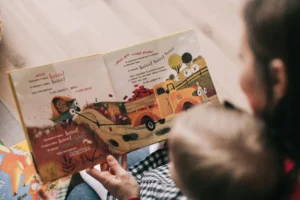You might be experiencing some sleep regression with your toddler in the form of them rejecting naptime. Your toddler is not alone! A lot of families have to work through napstime rejection. Rejecting naps can happen for a few days or a few weeks, either way, there is hope for getting back on track!
There are a wide range of reasons why your toddler might be fighting nap time, let’s focus on the main four reasons.
1 – THERE MIGHT BE TOO MUCH TIME BETWEEN EATING AND NAPPING
You might not realize how easily the gap of time between eating and napping can be affecting your kids’ day. If you wait too long after eating to put your kid down, they might actually be fighting nap time because they are getting a boost of energy from their food. Your best bet is to put your little one to sleep right after lunch. They will then wake up well rested and full of energy to sustain their activities until bedtime. If they are used to a larger gap between eating and sleeping, it may take some time for them to adjust. Just stick to the adjustment and they will eventually adapt.
2 – NAPTIME MIGHT BE AT THE WRONG TIME
Pinning down the best nap schedule is particularly challenging because it seems to constantly be shifting in that first 1.5 years of your child’s life.
As your little one gets older, they can handle being awake for longer stretches of time. It is important to watch your child for cues as to how awake or tired they may be. If your child seems like they are very alert, try pushing their naptime back 15 minutes. You want them to naturally get tired but also not cross the threshold into being over tired. It might take a few adjustments to get the right window of time but this can make a world of a difference. You should be consistent in trying a new time for multiple days so that your child has time to adjust to the change.
3 – YOUR TODDLER MAY NOT BE GETTING ENOUGH CUES
Everyone benefits from cues as to what is to expect next in their day. Children especially respond to cues such as predictable routines.
You can create a naptime routine and provide a clock for your toddler to start associating with their nap schedule. There are multiple clocks on the market that provide a cue for your child to recognize. Most of these clocks use colored lights for children too young to understand numbers.
4 – YOUR TODDLER MIGHT HAVE GROWN OUT OF NAPPING
Between 2.5 and 3 years is the normal age range that kids start dropping naptime. If your child is getting a solid 11-12 hours of sleep at night and are in that age range, they may simply no longer need a nap. If you are laying your little one down and they are having fun, playing and not even close to falling asleep, then there’s a good chance that it is time to say good-bye to napping.
CHANGE CAN TAKE TIME
Remember that every child is different. Some adapt to change quickly and others need more time. You should focus on being consistent and watching their cues to see how you can better help them. If you need help identifying your child’s needs, we are always here to help!





